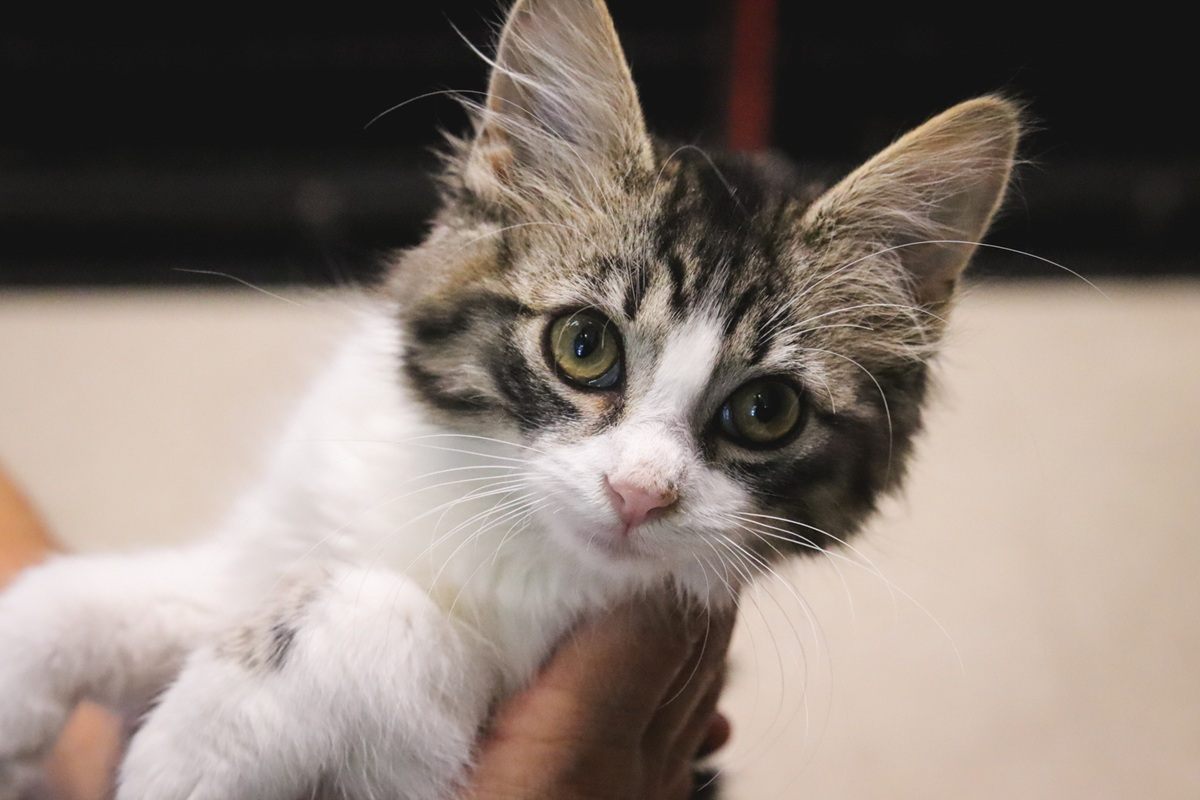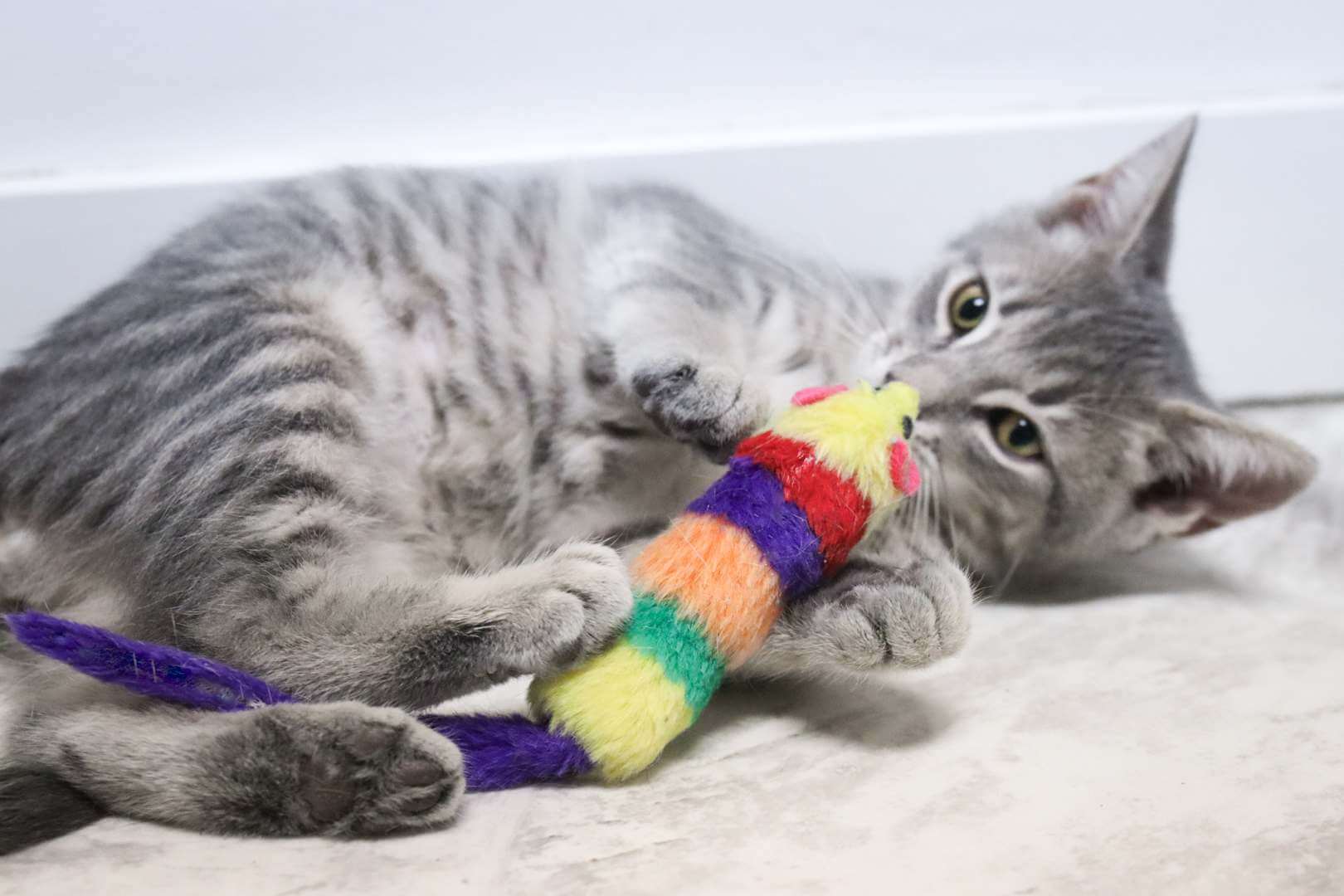
Kirsten McCarthy / Cats.com
Newborn kittens have eyes and ears that are closed. They can’t regulate their own body temperature, and they are completely dependent on their mother for survival.
As the weeks go on, kittens go through several important milestones in growth and development, eventually reaching the more rambunctious phases of kittenhood and then becoming an adult cat.
Here, we’ll cover some of the developmental milestones you can expect as kittens grow up, with a special focus on the eyes—including when a kitten’s eyes should open and signs that there could be an eye problem.
When Do Newborn Kittens Open Their Eyes?
A baby kitten’s eyes begin to open around 7-12 days of age. Prior to this, a kitten’s eyelids are completely shut, so they are essentially blind.
Rather than suddenly opening all at once, a kitten’s eyes open gradually, taking up to a few days. During this time, the eyelids may be partially separated, like a slit. Also, there might only be one eye open initially, with the second eye following suit in the next few days.
While some kitties open their eyes earlier than others, almost all kittens should have their eyes fully open by 14 days of age.
Closed eyelids in the first 1-2 weeks of life serve a protective function. Since their eyes are not fully developed at birth, a kitten wouldn’t be able to see anything even if their eyelids were open—and bright light could otherwise permanently damage newborn eyes.
When Do Kittens’ Eyes Change Color?

All kittens are born with dark blue eyes, and their eyes eventually change to their adult shade. Lapina / Shutterstock.com
All kittens are born with blue eyes. They develop their adult eye color once they are a little older.
The first change in eye pigment may be seen as young as 6-8 weeks of age, although true adult eye color generally isn’t set until a kitten is about 12 weeks old.
Certain breeds—such as Siamese or Himalayan cats—have blue eyes even as adults. But most feline breeds will change to a new eye color as their eyes develop during kittenhood.
What Are The Signs Of An Eye Problem In Kittens?
Sometimes, delayed opening of the eyes (longer than 14 days of age) can be a sign of eye infections or another health problem in kittens.
Other symptoms may include:
- Crusty, moist, or gooey buildup around the eye(s).
- Swelling or bulging of the eyelids or eye area.
- Any other signs of illness, such as loss of appetite or failure to gain weight.
What To Do If Your Kitten Has Eye Discharge Or Swelling
If you notice eye discharge, swelling, or crusts matted over the eyes, a veterinary visit should be scheduled immediately.
While waiting for your visit, it’s usually okay to gently wipe the area clean with a warm, wet cloth or piece of gauze. Never use soap or disinfectants that could damage a kitten’s delicate eyes.
Also, never try to force a kitten’s eyelids open. Always consult a veterinarian if a kitten’s eyes don’t open on their own within two weeks or if there is any sign of an eye problem.
Developmental Milestones For Kittens

Weeks 6–8 are all about play and learning—kittens are full of energy and it’s the perfect time to build healthy social and behavioral habits. Kirsten McCarthy / Cats.com
Week 1:
Newborn kittens have eyes and ears that are tightly closed, with the eyelids sealed shut and ear flaps folded against their tiny heads.
Since they can’t see or hear (and also can’t walk, regulate their body temperature, or go to the bathroom on their own), newborn kittens are totally dependent on their mother.
In the first week of life, kittens spend most of their time eating and sleeping—nearly doubling their body weight!
Week 2:
In the second week of life, a kitten’s eyes start to open—although their vision isn’t sharp yet. Kittens are still sensitive to bright lights since their pupils are slow at adjusting to changes in light.
The ear canals also start to open around this time.
Week 3:
Some exciting things happen during a kitten’s third week of life! They may start taking their first steps and trying to explore the world around them, although they are wobbly on their feet.
By three weeks, a kitten’s ear canals should be fully open, with ear flaps beginning to stand up like an adult cat’s. During this transitional time, their bodies are developing the ability to urinate and defecate without being stimulated by their mother, and to regulate their own body temperature.
Also, a kitten’s baby teeth start to come in at three weeks of age.
Weeks 4-5:
A kitten’s sight, hearing, and sense of smell are becoming sharper. Their walking ability is improving, and they may be more social and playful.
Also Read: Understanding Your Cat’s Five Senses
Canned kitten food can be introduced at 4-5 weeks, although kittens will continue to nurse in addition to eating canned food.
Most kittens master the use of a litter box by this age—although the box should have low sides so it’s not difficult for them to climb into.
Weeks 6-8:
Kittens at this age are very playful (and entertaining to watch!). Socialization and learning are important, so they can develop good habits and behavior for adulthood.
At 6-8 weeks, kittens can begin receiving vaccinations. They should be completely weaned (off their mother’s milk and eating a balanced kitten food) by 8 weeks of age.
Commonly, kittens are adopted to their forever homes at 8-12 weeks of age.
5-6 Months and Beyond:
At 5-6 months of age, kittens go through puberty and reach sexual maturity (occasionally this happens as young as four months!), so it’s important to think about spaying or neutering if your furkid hasn’t already had the procedure.
Once your kitten’s growth rate slows down, your vet will also discuss switching from kitten food to an adult cat food. Most kittens will be full-grown by 12 months of age.
Conclusion
Kitten growth is a joy to watch. It’s so much fun to see these tiny furballs take their first steps and explore the world around them.
Amongst their many developmental milestones, opening their eyes in the first 1-2 weeks of life is an important step for kittens as they grow up. If a kitten’s eyes are delayed in opening, a veterinary visit is warranted—and an urgent vet visit is needed in case of any eye swelling, discharge, or other signs of illness.
Frequently Asked Questions
How long does it take for a kitten’s eyes to open after birth?
A kitten’s eyes begin opening at 7-12 days of age. The process takes up to a few days, with each eye fully open by two weeks of age. The right and left eyes may open at different times within this range.
When can you start holding kittens?
It’s best to let kittens spend as much time as possible with their mother in the first four weeks of life (especially the first two weeks), which is when they are nursing. As kittens develop enough coordination to walk, play, and explore, that’s a good time to start socializing them and introducing them to petting/cuddling.
How long does it take for a kitten to walk?
A kitten may start trying to stand up in their second week of life. Many begin walking (with very clumsy steps initially) by three weeks of age. Mobility improves a lot around the fourth week of age, and kittens become more agile by the time they’re 6-8 weeks old.
How long do kittens need to be with their mother?
With the exception of orphaned kittens, young kitties should always stay with their mother during their first four weeks of life, prior to weaning. Six weeks is the youngest age at which a kitten should be adopted, although 8-12 weeks of age is much more common.







